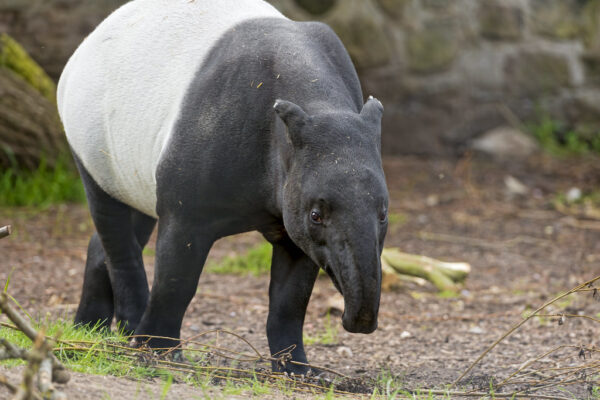Tapirs are large, herbivorous mammals belonging to the family Tapiridae. They are similar in shape to a pig, with a short, prehensile nose trunk. The scientific name for tapir is Tapirus, and it can be found in tropical rainforests, marshes, and swamps across Asia, Central America, and South America.
Physical Traits
Tapirs have stocky bodies with short legs and thick skin. They have a brownish-black or grayish coat with white markings on their faces and rumps. Their most notable feature is their long snout, used like a finger to pluck leaves from tree branches or root around the soft ground for food. Adult tapirs range in size from 300-700 pounds and can grow up to 8 feet long.
Life Span
The average life span of a tapir is 25-30 years in the wild and up to 40 years in captivity.
Habitat
Tapirs live in tropical rainforests, marshes, swamps, and mangroves across Asia, Central America, and South America. The black-and-white Malay tapir is the largest species of tapir and can be found inhabiting forests and swamps of Southeast Asia. The Brazilian tapir lives in the lowland forests of Brazil, while Baird’s tapir inhabits Central American forests from Mexico to Panama.
Diet
Tapirs are herbivores that feed on leaves, fruit, grasses, buds, twigs, and aquatic plants such as water lilies. Its mobile nose can reach into crevices or pluck leaves from tree branches that other animals cannot get.
Reproduction
Mating season for most species of tapirs occurs during the wet season when food is plentiful. After a gestation period of 13 months, females give birth to one calf at a time which will stay with its mother until it reaches adulthood at two years old.
Conservation Status
The IUCN Red List classifies all four species of tapirs as vulnerable due to habitat loss caused by deforestation and hunting for their meat or hides humans. Conservation efforts are underway throughout their range, including protected areas where they can roam freely without fear of being hunted or disturbed by humans or other predators, such as jaguars or pumas, who may prey on them if given a chance.
Interesting Facts
- Tapirs have been around for at least 20 million years, making them one of Earth’s oldest surviving mammal species!
- Tapirs use mud baths to cool off during hot days but also use them as camouflage against predators!
- Tapirs communicate using vocalizations such as whistles and grunts to warn each other about potential danger!


